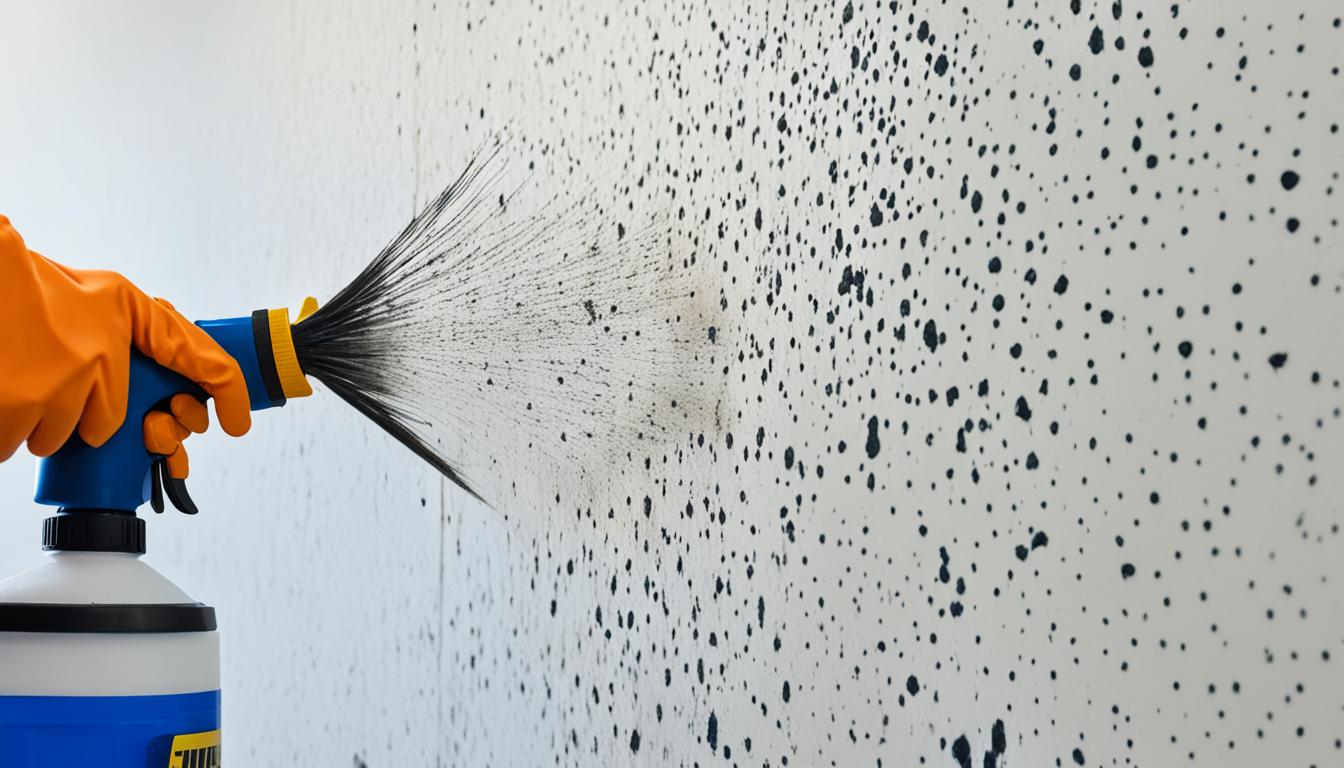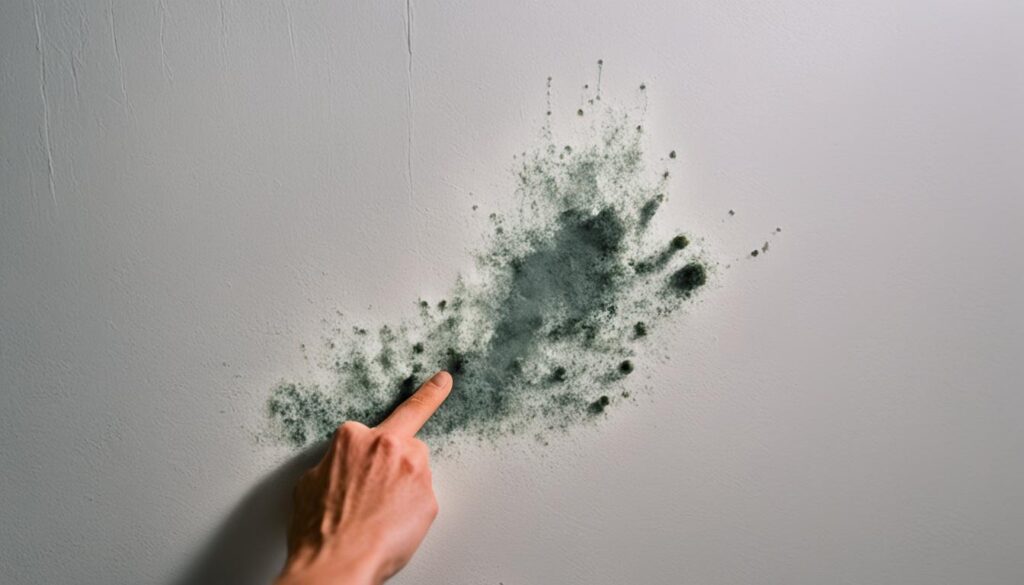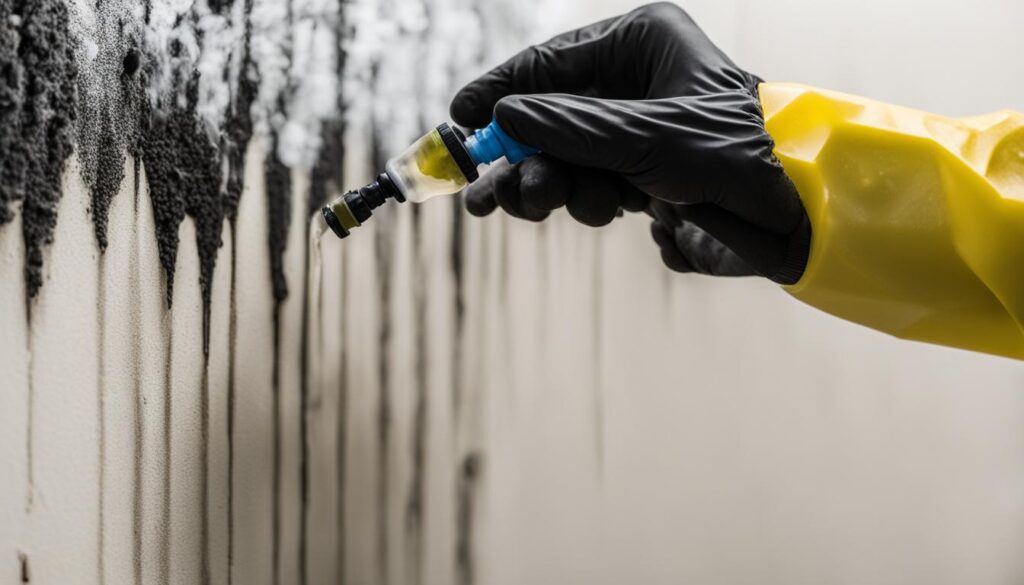
Transforming Your Space with how to kill Mold on drywall
Discover how to effectively remove mold from drywall and create a safe, mold-free environment in your space. Mold growth on drywall is not only unsightly but also poses potential health risks. In this section, we will explore various techniques and methods to tackle mold on drywall, ensuring that you have the knowledge and tools to eradicate mold effectively.
Mold removal techniques range from DIY remedies to professional services, each offering its own benefits and considerations. By understanding these methods, you can take control of your space and ensure a mold-free environment for yourself and your loved ones. Let’s dive in and explore the ways to kill mold on drywall.
Key Takeaways:
- Identify the dangers associated with mold growth on drywall.
- Understand the health risks of mold and the importance of prompt action.
- Explore effective techniques for killing mold on drywall.
- Consider natural remedies, professional services, and preventive measures.
- Ensure a safe, mold-free environment by following the expert guide.
Understanding the Dangers of Mold on Drywall
Before we delve into the different techniques for killing mold on drywall, it’s crucial to understand the potential dangers associated with mold growth. Mold on drywall not only poses a threat to the structural integrity of your home but also to your health. Let’s explore the health risks of mold and why it’s important to address the problem promptly.
The Health Risks of Mold
Mold is a type of fungus that thrives in moist environments, making drywall an ideal breeding ground. When mold spores are released into the air, they can trigger allergic reactions and respiratory problems in individuals who are sensitive or have underlying health conditions.
Some common health risks associated with mold on drywall include:
- Respiratory issues, such as coughing, wheezing, and shortness of breath
- Allergic reactions, including sneezing, runny nose, and itchy eyes
- Asthma attacks or worsening of existing asthma symptoms
- Frequent headaches and migraines
- Fatigue and difficulty concentrating
These health risks can be particularly concerning for infants, children, the elderly, and individuals with compromised immune systems. It’s essential to take mold growth on drywall seriously and take immediate action to address the issue.
“Unchecked mold growth on drywall can lead to severe health complications if left unattended. It’s crucial to address the problem promptly to ensure a safe and healthy living environment for you and your loved ones.”

Now that we have a better understanding of the dangers posed by mold on drywall, let’s explore the effective techniques for killing and removing mold in the next section.
Effective Techniques for Killing Mold on Drywall
Now that you are aware of the dangers of mold, it’s important to take immediate action to kill mold on drywall. Whether you’re dealing with a small localized growth or a widespread infestation, there are several effective techniques for mold removal. By following these methods, you can restore your space to a mold-free environment.
1. Natural Remedies:
If you prefer eco-friendly solutions, natural remedies can be effective in killing mold on drywall. Some popular options include:
- Vinegar: With its acidic properties, vinegar can help kill mold spores and prevent future growth. Simply mix equal parts vinegar and water in a spray bottle, then generously spray the affected area. Let it sit for a few hours before scrubbing with a brush.
- Baking Soda: Baking soda is known for its ability to absorb moisture and eliminate odors. Create a paste by mixing baking soda with water, then apply it to the moldy area. Allow it to dry, then scrub away the mold using a brush or sponge.
- Tea Tree Oil: Tea tree oil has natural antifungal properties that can effectively kill mold. Mix 1 teaspoon of tea tree oil with 1 cup of water in a spray bottle. Spray the solution onto the moldy surface and let it sit overnight. Wipe away the mold the next day.
2. Chemical Cleaners:
If you’re dealing with a severe mold problem, chemical cleaners can offer a more aggressive approach. Look for mold-specific cleaners that contain ingredients like bleach or hydrogen peroxide. Follow the instructions on the product and ensure proper ventilation when using these cleaners.
“Chemical cleaners are particularly useful for extensive mold infestations that require a stronger solution. However, it’s important to take safety precautions and carefully follow the instructions provided.”
3. Professional Mold Remediation:
In some cases, it may be necessary to seek professional mold remediation services for effective mold removal on drywall. Certified experts have the knowledge, experience, and equipment to handle mold problems safely and efficiently. They can identify the root cause of the mold growth, ensure proper containment, and thoroughly remove the mold to prevent recurrences.
It’s important to note that professional mold remediation services may be required for extensive mold damage or if you have underlying health conditions that could be exacerbated by mold exposure.

Comparison of Mold Removal Methods
| Techniques | Pros | Cons |
|---|---|---|
| Natural Remedies | – Eco-friendly – Safe for most surfaces – Affordable |
– Requires more time and effort – May not be suitable for severe infestations |
| Chemical Cleaners | – Strong and effective – Quick results – Suitable for extensive mold growth |
– May contain harsh chemicals – Requires proper ventilation and safety precautions |
| Professional Mold Remediation | – Expert knowledge and experience – Thorough and efficient – Prevents future mold growth |
– Higher cost – May be necessary for severe mold problems |
Keep in mind that prevention is key when it comes to mold on drywall. Addressing moisture issues, maintaining proper ventilation, and promptly repairing any water damage can help prevent mold growth in the first place. Regularly inspecting your home for any signs of mold and taking immediate action will ensure a healthy and mold-free environment.
Conclusion
In conclusion, understanding how to effectively kill mold on drywall is crucial for maintaining a mold-free environment and ensuring the safety of your living space. By following the techniques and methods outlined in this article, you can eradicate mold and create a healthier living environment for you and your family.
Remember, prevention is key in maintaining a mold-free home. Regularly inspect your drywall for any signs of moisture or mold growth, and promptly address any issues you discover. Implementing proper ventilation, controlling indoor humidity levels, and fixing any leaks or water damage will significantly reduce the risk of mold growth.
If you find yourself dealing with extensive mold infestation or if you are unsure about the severity of the problem, it’s highly recommended to seek professional assistance. Fix Mold Miami offers certified mold removal services, including mold assessments and remediation. Their expert team can help you effectively eliminate mold and restore a clean, mold-free environment in your home. Contact Fix Mold Miami at 305-465-6653 for immediate assistance and expert advice.
Take control of your space today, proactively prevent mold growth, and enjoy a mold-free environment that promotes a healthier and safer living environment for you and your loved ones.




